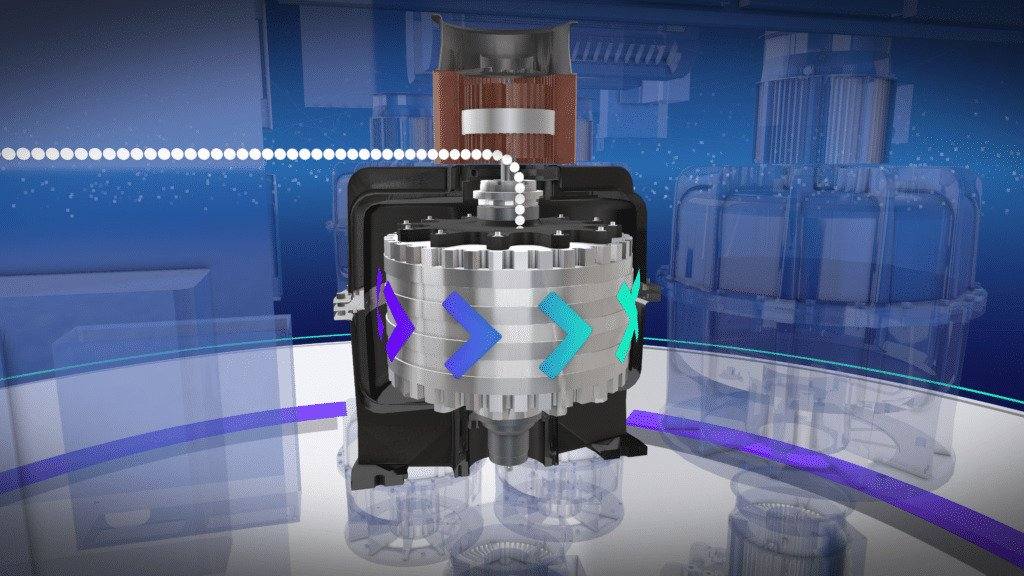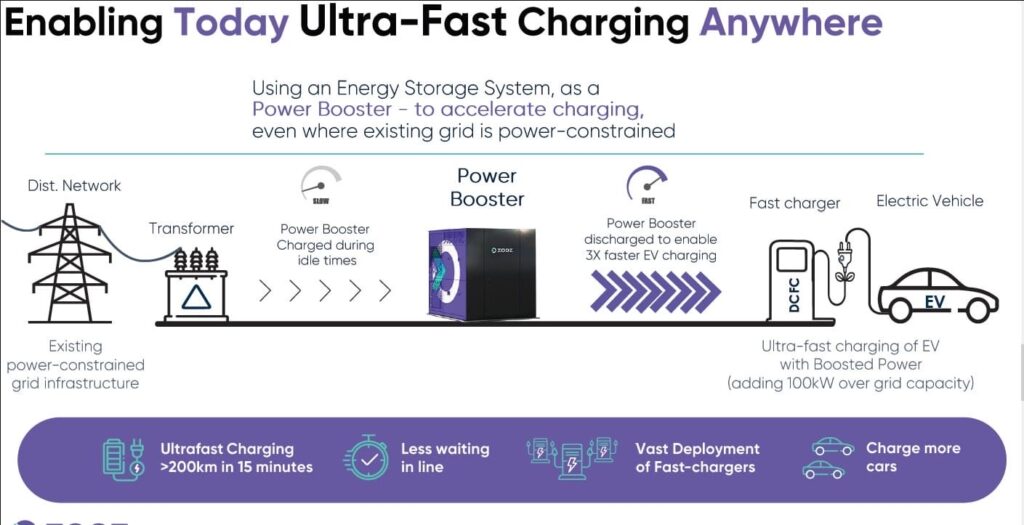Not Just a UPS: Flywheel Based Power Boosters are a Game Changer for EV Charging

The growing adoption of electric vehicles (EVs) is creating a need for reliable and cost-effective charging solutions. While EVs are still considered as new innovation, it is a centuries-old technology that offers the ideal charging solution. Flywheels – best known for powering steam engines in factories during the Industrial Revolution – are making a comeback.
Flywheel energy storage systems (FESS) offer a sustainable and cost-effective solution to enable ultra-fast charging in locations with limited power.
What Exactly is Flywheel Energy Storage
A flywheel energy storage system uses a rotating mass to store kinetic energy with very low frictional losses. The energy passes through 3 main phases:
- Acceleration – The flywheel’s integrated motor is charged from an electric power source (i.e., the grid), accelerating the flywheel’s rotation to a very high speed while converting the electrical energy into kinetic energy within the spin of the mass.
- Levitation – Once the flywheel reaches full speed (ten thousand of RPMs), it is “fully charged” with kinetic energy. Inertia keeps it spinning, requiring only minimal energy to keep it going. Reducing friction is critical here to minimize energy loss. This is also known as the “standby mode,” indicating that the FESS is charged and ready to serve.
- Deceleration – Once the energy is needed, the integrated motor slows the flywheel while converting the stored kinetic energy back into electrical energy and discharges it fast (can be milliseconds) to the connected system (i.e., the grid and the EV charger).

The amount of energy that the flywheel can store and then discharge is directly proportional to its size and weight and the speed at which it can spin. Advanced flywheel energy storage systems available today can reach speeds of over 1,000 m/s with 100,000 RPM.
Current Flywheel Applications
As their main advantage is being able to supply high bursts of power in a very short time, over the years, the main stationary applications of flywheels have been in uninterruptible power supplies (UPS) and trackside support in traction (rail) and mining systems. In recent years:
- F1 race cars use flywheels to collect energy when braking to provide a speed boost when needed (also known as Kinetic Energy Recovery System KERS)
- Trains use flywheels to help propel them over gaps in the third rail.
- Flywheels are used to help regulate the voltage along electrified railways, saving energy.
- Data centers rely on flywheels to provide backup power in case of power outages.
How Do Flywheels Compare to Other Energy Storage Systems?
Flywheel energy storage systems offer significant advantages over more traditional storage systems like batteries, including the following:
- Lifespan – flywheels last over 200,000 cycles, over 40 times more than batteries in high-power applications.
- Speed – flywheels discharge absorbed energy much quicker than batteries and other energy storage systems.
- Sustainable – with a minimal carbon footprint, flywheels are environmentally friendly and do not contain toxic nor rare earth materials.
- Cost Effective – with minimal maintenance, replacements and TCO.
Flywheel Power Boosters for EV Charging
In most parts of the world, even though electricity supply is sufficient to meet the increased demand created by EVs, the challenge lies in the distribution network to supply the power required for fast and ultra-fast EV charging (50kW and above).
The flywheel power booster can solve this distribution issue by storing energy from the grid and “flushing” it to an ultra-fast charger when an EV is plugged in. Thanks to the flywheel’s high discharge speeds, the energy drawn from the grid at a slow place can be flashed to the car in less than 15 minutes with a Level 3 charger regardless of grid capabilities.

The Wave of the Future
Unlike other “throwback” trends coming back into style and fading away again, the flywheel’s comeback is likely to stick around. It is a powerful solution that addresses today’s sustainability goals and the race to net zero emissions.
Flywheel technology, such as the ZOOZTER™ can:
- Enable fast and cost-effective rollout of ultra-fast charging stations with lowest total cost of ownership.
- Defer costs for immediate grid upgrades
- Avoid demand charges by peak shaving
- Increase revenues for charge-point operators and property owners who will be able to provide ultra-fast charging to more vehicles per day.
- Meet sustainability goals.
- Maximize the amount of time fleet vehicles are on the road.
Enabling the EV revolution while increasing the bottom line – what could be better?
